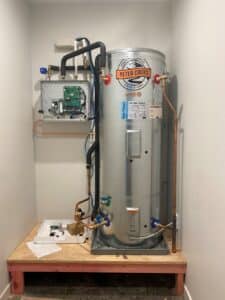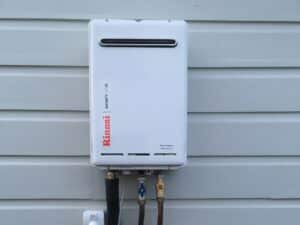When it comes to building a solid financial foundation, having an emergency fund is crucial. An emergency fund serves as a safety net, providing a financial cushion to help you navigate unexpected expenses or income disruptions. One of the key considerations when setting up an emergency fund is choosing the right savings account. In this comprehensive guide, we will explore the factors to consider when selecting a savings account for your emergency fund and provide valuable insights to help you make an informed decision.
Why is an Emergency Fund Important?
Before diving into the details of selecting a savings account, let’s quickly understand the importance of having an emergency fund. Life is full of uncertainties, and unexpected expenses can arise at any time. Whether it’s a medical emergency, a car repair, or a sudden job loss, having funds set aside for such situations can alleviate financial stress and prevent you from going into debt.
An emergency fund provides you with a sense of security and peace of mind. It allows you to weather financial storms without compromising your long-term financial goals. By having a dedicated fund for emergencies, you can avoid dipping into your regular savings or retirement accounts, which are meant for other purposes.
Factors to Consider When Choosing a Savings Account for Your Emergency Fund
When selecting a savings account for your emergency fund, several factors should be taken into consideration. These factors can help you maximise the growth of your funds while ensuring accessibility and security. Let’s explore each factor in detail.
1. Interest Rates
Interest rates play a significant role in determining the growth of your savings over time. Look for savings accounts that offer competitive interest rates. A higher interest rate means your money will earn more and grow faster. Even a slight difference in interest rates can make a substantial impact on your savings in the long run.
2. Accessibility
In emergencies, quick access to your funds is essential. Look for savings accounts that offer easy access to your money. Consider factors such as online banking, mobile apps, ATM access, and the ability to transfer funds quickly. Ideally, choose a savings account that provides both convenience and flexibility in accessing your emergency funds.
3. Fees and Minimum Balance Requirements
Be mindful of any fees associated with the savings account. Some accounts may have monthly maintenance fees or charges for exceeding transaction limits. Additionally, consider the minimum balance requirement to avoid penalties or fees. Look for accounts with minimal or no fees and reasonable balance requirements.
4. FDIC Insurance
The safety of your funds is paramount. Ensure that the savings account you choose is FDIC-insured. The Federal Deposit Insurance Corporation (FDIC) provides insurance coverage up to $250,000 per depositor, per institution. This protection safeguards your funds in case of bank failure, giving you peace of mind.
5. Account Features and Services
Consider the additional features and services offered by the savings account provider. Some accounts may offer perks like check-writing privileges, bill payment services, or rewards programs. While these features may not be essential for an emergency fund, they can add value and convenience to your overall banking experience.
6. Customer Service and Reputation
The reputation and customer service of the financial institution are crucial factors to consider. Look for reviews and ratings of the bank or credit union where you plan to open a savings account. A reliable and reputable institution will prioritise customer satisfaction and provide responsive and efficient service.
7. Compatibility with Your Current Banking Setup
Consider how the new savings account will fit into your existing banking setup. If you already have a primary checking account or other accounts with a specific bank, it may be beneficial to open an emergency fund savings account with the same institution. This can simplify fund transfers, streamline your finances, and potentially provide additional benefits or discounts.
8. Financial Goals and Time Horizon
Take into account your financial goals and time horizon when choosing a savings account. If you plan to use your emergency fund as a short-term safety net, a traditional savings account may be sufficient. However, if you have longer-term goals for your emergency fund, you may consider options like high-yield savings accounts, money market accounts, or certificates of deposit (CDs) that offer higher interest rates.
9. Online vs. Brick-and-Mortar Institutions
Decide whether you prefer an online bank or a traditional brick-and-mortar institution. Online banks often offer higher interest rates and lower fees due to their lower overhead costs. On the other hand, brick-and-mortar banks may provide in-person customer service and the convenience of physical branches and ATMs.
10. Your Risk Tolerance
Evaluate your risk tolerance when choosing a savings account. While savings accounts are generally considered low-risk options, some alternatives like money market accounts or CDs may offer slightly higher returns but with certain limitations or risks. Assess your risk tolerance and choose an account that aligns with your comfort level.
Types of Savings Accounts for Emergency Funds
Now that we have explored the factors to consider, let’s delve into the different types of savings accounts suitable for emergency funds. Each type offers unique features and benefits depending on your financial goals and preferences.
1. Traditional Savings Accounts
Traditional savings accounts are simple options for emergency funds. They offer easy access to your money and typically have no minimum balance requirements. While the interest rates may be lower compared to other options, traditional savings accounts provide liquidity and convenience.
2. High-Yield Savings Accounts
High-yield savings accounts are similar to traditional savings accounts but offer higher interest rates. These accounts are typically offered by online banks and credit unions. High-yield savings accounts are an excellent choice if you want to maximise your savings growth potential while maintaining accessibility.
3. Money Market Accounts
Money market accounts (MMAs) are a hybrid option that combines features of both savings and checking accounts. MMAs generally offer higher interest rates than traditional savings accounts while providing limited check-writing and debit card capabilities. These accounts are suitable for emergency funds that require quick access to funds while earning competitive interest.
4. Certificates of Deposit (CDs)
Certificates of Deposit, or CDs, are fixed-term accounts that offer higher interest rates in exchange for locking your funds for a specific period. CDs typically have terms ranging from a few months to several years. While CDs may not offer immediate access to your funds without penalties, they can be an excellent option for long-term emergency funds or for those seeking higher interest rates with a longer time horizon.
5. Online Savings Accounts
Online savings accounts are offered by Internet-based banks, which often have lower overhead costs compared to traditional banks. These accounts provide the convenience of online banking, mobile apps, and 24/7 customer support. Online savings accounts are known for their competitive interest rates and low fees, making them suitable for those who prioritise maximising their savings’ growth potential.
Creating and Maintaining Your Emergency Fund
Once you have selected the right savings account for your emergency fund, it’s time to start building and maintaining your fund. Here are some practical steps to help you create and manage your emergency fund effectively:
1. Determine Your Target Savings Goal
Set a target savings goal for your emergency fund based on your monthly expenses and comfort level. Financial experts generally recommend saving three to six months’ worth of living expenses. However, individual circumstances and risk tolerance may vary. Analyse your financial situation and choose a target that aligns with your needs.
2. Establish a Systematic Savings Plan
Develop a systematic savings plan to contribute regularly to your emergency fund. Automate your savings by setting up automatic transfers from your primary checking account to your emergency fund savings account. This ensures consistent contributions and eliminates the temptation to spend the money elsewhere.
3. Prioritise Your Emergency Fund Contributions
Make your emergency fund a financial priority. Allocate a portion of your income specifically for your emergency fund before considering other discretionary expenses. By prioritising your emergency fund contributions, you ensure that you are consistently building, and maintaining your safety net.
4. Regularly Review and Adjust Your Fund
Periodically review your emergency fund to ensure it aligns with your current financial situation and goals. As your income or expenses change, you may need to adjust the target savings goal or contribution amounts. Regularly reassessing your emergency fund ensures that it remains relevant and adequate.
5. Resist the Temptation to Use Your Fund for Non-Emergencies
Avoid using your emergency fund for non-emergency expenses. The purpose of the fund is to provide financial security during unexpected events. Resist the temptation to dip into your savings for discretionary purchases or non-essential expenses. Maintaining discipline and preserving your emergency fund’s integrity will ensure its availability when you truly need it.
6. Replenish Your Fund After an Emergency
If you need to use your emergency fund, make replenishing it a priority. After an unexpected expense or income disruption, focus on rebuilding your fund as soon as possible. Resume regular contributions and allocate additional funds towards replenishing the amount withdrawn. This ensures that your emergency fund remains robust and ready for future emergencies.
Conclusion
Choosing the right savings account for your emergency fund is a critical step towards financial security. By considering factors such as interest rates, accessibility, fees, and FDIC insurance, you can make an informed decision that aligns with your goals and preferences. Remember to establish a systematic savings plan, regularly review and adjust your fund, and resist the temptation to use the funds for non-emergencies. With a well-managed emergency fund, you can face unexpected financial challenges with confidence and peace of mind.
Please be aware that the information in this article is just meant to serve as general information and is not intended to be used as financial advice. Before making any financial decisions, please seek the advice of a professional Advisor.











